Markets Live, Thursday 29 April, 2021 - WAtoday
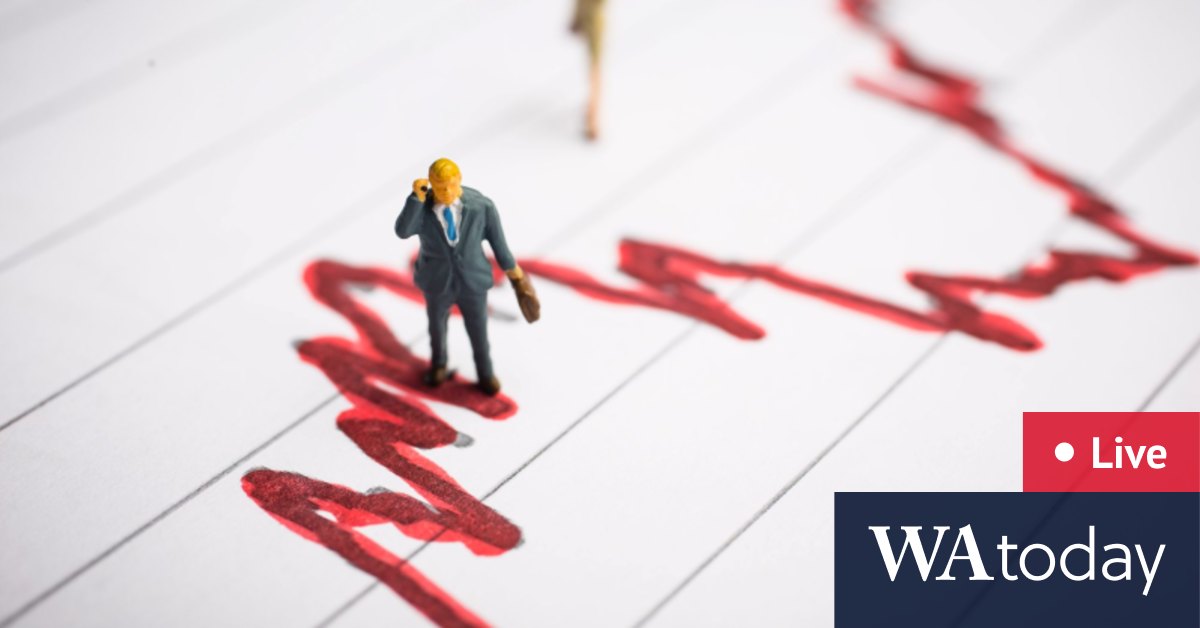
That's it from the Markets Live team today. Thanks for tuning in.
Alex Druce will be back tomorrow to wrap the week up.
See you then.
Get our wrap of the day on the markets, breaking business news and expert opinion delivered to your inbox each afternoon. Sign up for The Sydney Morning Herald's here and The Age's here.
Opinion
The escalating slugfest between Rex and Qantas has taken a new twist with the regional airline now taking aim at Australia's second-largest carrier Virgin, accusing both of dumping capacity on the domestic market in order to crush the smaller airline which has recently expanded services to capital cities.
Rex has now appealed to the umpire to intervene. It wrote to competition regulator chairman Rod Sims this week outlining the company's suspicions that the "massive" capacity expansion undertaken by Virgin and Qantas had been done in a coordinated manner.
Rex claims the "massive" capacity expansion undertaken by Virgin and Qantas had been done in a coordinated manner.Credit:Kate Callas
The letter was written by Rex's deputy chairman, John Sharp, who asserts there were mutual benefits for the two large carriers if Rex's entry into the market fails, which he says is a realistic prospect if Virgin and Qantas' behaviour continues indefinitely.
Rex announced in December it would begin flying the Melbourne to Sydney route on March 1 which Sharp contends gave its competitors plenty of time to be prepared.
Sharp is questioning why when the airlines' load factors were a combined 55 per cent in February that Virgin, Qantas and Jetstar increased capacity by about 80 per cent in March.
Sharp, who was a former transport minister in the Howard government, makes parallels between today's behaviour of the two aviation incumbents and that of Ansett and Qantas towards the then-incomer Virgin Blue in 2002 - which drew a regulatory response from the ACCC.
The ACCC takes a particular interest in the competition aspects of the aviation market, given the industry's particular importance to the national infrastructure and the broader economy.
There is no doubt that Sims will take a look at Rex's complaint.
Read Elizabeth Knight's full column here
Search giant Google took in more than $5 billion from advertisers and corporate customers in Australia for the first time in 2020, despite the first recession in nearly three decades and a sharp downturn in advertising spending caused by the coronavirus pandemic.
Financial accounts lodged on Thursday with the corporate regulator for the 2020 calendar and financial year show Google's gross revenue in Australia grew 8 per cent to $5.2 billion in 2020, a fresh high. Advertising revenue hit $4.4 billion, up from $4.1 billion the previous year.
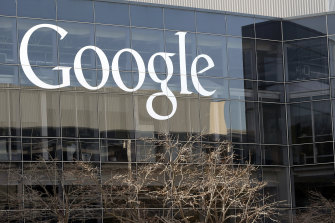
Google Australia posted gross revenue for $5.2 billion last year, which majority of the money from advertisers.Credit:AP
Google said its net revenue, which excludes certain costs of sales, was $1.4 billion, up from $1.2 billion the year before. Google made a pre-tax profit of $239 million in 2020, compared to $134 million in 2019. Its company tax bill rose to $76 million from $59 million.
Google's revenue growth contrasts with the experience of large local media companies including News Corp Australia, Nine Entertainment Co (owner of this masthead) and Seven West Media.
They were forced to slash costs, and in some cases cut jobs and renegotiate debt with banks as advertising revenue fell as much as 30 per cent. Nine and Seven subsequently posted strong profits in the second-half of 2020 and have been optimistic on a recovery this year.
Read the full story here
The Australian sharemarket is at its highest since the coronavirus hit and likely to push even further ahead after a strong session for mining and technology stocks.
The benchmark ASX200 added another 0.3 per cent on Thursday to finish at 7082.3, its best close since February 21 last year. The index touched a peak of 7096.9 during the session.
Iron ore miners BHP and Rio Tinto were strong - each gaining 0.9 per cent - while Afterpay and biotech giant CSL also rose as the market advanced for a second session.

Australian shares closed at a 14-month high 7082.3 on Thursday. Credit:Tamara Voninski
The benchmark index is now within 1.2 per cent of its best-ever close 14 months ago and - according to EY partner and investment banking veteran Duncan Hogg - set to continue its march towards new records.
"Ultimately the highs the market is reaching is really a function of the optimism we see across the board. And we see that continuing," Mr Hogg said.
"We're seeing really cheap money, market stimulus, a whole lot of cash really driving the equity market, driving the IPO market and driving the M&A market."
"So right now it's all positive. We're just waiting for what is going to slow it down."
Supermarket giant Woolworths was the most significant drain on the market, dropping 3.9 per cent to $39.81 after a disappointing quarterly result and news it would not be proceeding with a controversial Dan Murphy's liquor store in Darwin.
Conversely, major competitor Coles added 3.3 per cent to $16.38 as analysts pondered whether the tables had turned in the rivalry between the two.
Afterpay led tech stocks higher with a 3.5 per cent gain to $120.50, while gold miners also glittered.
Miner Fortescue Metals retreated 0.2 per cent to $22.58 on the back of a weaker than expected quarterly result.
The major banks were also subdued, with ANZ dropping 0.6 per cent to $28.94.
Wall Street's lead appeared soft but US stocks improved after US Federal Reserve chair Jerome Powell gave a suitably dovish address after the overnight FOMC meeting.
The Fed again promised to keep interest rates lower for longer, a situation that benefits equity markets.
Knockout quarterly results from tech giants Apple and Facebook also helped create momentum for the Australian market.
The Australian sharemarket added another 0.3 per cent on Thursday to finish at 7082.3, its best close since February 21 last year.
The iron ore giants, tech firms and biotech CSL helped the ASX200 make it two straight days of gains as the index moved within 1.2 per cent of its best-ever close 14 months ago.
Miners BHP and Rio Tinto each gained 0.9 per cent, while biotech CSL was 0.9 per cent higher too.
The tech sector led gains with a collective 2.3 per cent rise.
Afterpay ended 3.5 per cent ahead at $120.50.
Woolworths was the most significant drain on the market, dropping 3.9 per cent to $39.81 after a disappointing quarterly result.
Futures are pointing to strong gains in the US tonight, with the S&P E-mini up 0.6 per cent, the Dow 0.3 per cent higher, and the Nasdaq up 0.9 per cent.
The head of supermarket giant Woolworths has admitted consumers' return to pre-COVID shopping habits may be disproportionately benefiting rival Coles as his company gave a weaker-than-expected trading update.
The company said on Thursday comparable sales at its supermarkets division fell 2.1 per cent to $11.1 billion in the March quarter as its performance began to be compared against the panic buying boom of March 2020. This marked a bigger drop than the 1 per cent fall that analysts had been forecasting.
Chief executive Brad Banducci also said trading for the first three weeks of the fourth quarter had been largely flat on last year, a stark contrast to Coles, which on Wednesday reported a 4 per cent rise in its sales for the start of April.
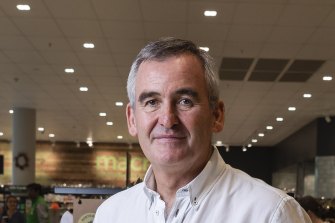
Woolworths CEO Brad Banduccii.Credit:Rhett Wyman
Analysts have been predicting that Coles had been losing market share to its major rival, but these latest results suggest the tables may have started to turn. Mr Banducci acknowledged that the normalisation of shopping habits post-COVID were likely favouring Coles with its higher number of inner-city and shopping-centre-situated stores, which had been harder hit during the lockdowns.
"We are seeing that playing out. We don't think it penalises us, but it doesn't unduly benefit us," he said. "I think it's good for the longer term, we do want to get back to more normalised, predictable shopping patterns for our customers."
Both Mr Banducci and Coles chief Steven Cain, who presented his company's third-quarter results earlier this week, talked about a return to normal for Australian shoppers, with customers purchasing fewer items and less on bulk, buying more on weekends and shopping at CBD stores as people return to the office.
This is good news for Coles, which has more stores in shopping centres and city centres than Woolworths, and saw its shares rise as much as 4.7 per cent on Thursday.
Shares in Woolworths, however, tumbled by as much as 3.7 per cent early in the day as investors digested the update.
Milford Asset Management portfolio manager Greg Cassidy said overall Woolworths' performance was strong, but the gap between it and Coles was "narrowing".
Diversified property group GPT has forecast an 8 per cent growth in earnings for the full year underpinned by improving consumer confidence and the assumption of no new shocks coming from the global pandemic.
In the March quarter, the chief executive Bob Johnston said there were signs of a recovery in sentiment across its main business drivers of retail, office and the logistics and warehouse operations.
"The group's diversified portfolio continues to benefit from the economic recovery currently underway. In logistics, tenant demand for high-quality assets remains strong supporting the ongoing rollout of our development pipeline," Mr Johnston said.
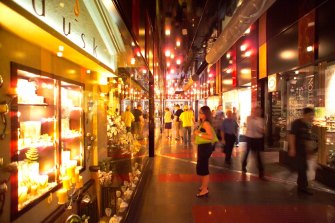
GPT Group's Melbourne Central mall has been hot by lack of workers in the CBD
While the retail division was impacted by the lack of CBD workers in Melbourne which hit the Melbourne Central mall, overall sales were up 12.4 per cent, boosted by a rise in general retail, which includes internet-immune nail and beauty salons, optometrists and some medical services.
But analysts differed in their take, saying the quarterly update was relatively weak.
Sholto Maconochie from Jefferies said while rent collection improved, operating performance was weak with occupancy declines across all asset classes.
"Retail sales improved slightly but are weaker than peers, dragged down by Melbourne Central," he said.
"Heavy Melbourne exposure with 35 per cent of assets and single-tenant office risks see us prefer Dexus for office, Scentre Group for retail and Centuria Industrial REIT for industrial over GPT."
Mr Johnston acknowledged that while 2020 was a challenging year for physical retailing, the recovery GPT has seen in visitations and sales growth demonstrates the quality and resilience of its assets and the desire for customers to return to our shopping centres.
"Record levels of household savings and buoyant consumer confidence, coupled with an increasing appetite for a return to normal activities, should continue to translate to broad-based retail sales growth across the entire portfolio over the remainder of the year."
Office occupancy was 91 per cent which included the completion of the new tower at 32 Smith Street, Parramatta in Sydney's west and also leasing renewals with Vocus at 530 Collins Street and Morrows at 2 Southbank Boulevard in Melbourne.
GPT securities were last 0.3 per cent up to $4.71.
Shares in buy now, pay later firm Sezzle rose by as much as 6.4 per cent today after the US-focussed payments company announced a partnership with the owner of e-commerce site shop.com.
Sezzle's ASX-listed shares hit a nine-day high of $9.15 following news it would provide payment options for customers of multi-level marketing firm Market America Worldwide.
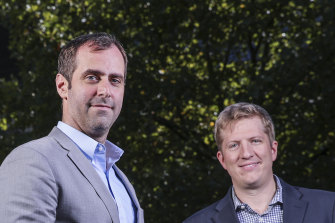
Charlie Youakim (L), co-founder and CEO Sezzle, and president and co-founder Paul Paradis. Credit:Wayne Taylor
"This partnership opens the door for millions of shoppers to access Sezzle's barrier-breaking, next generation of payments," chief executive Charlie Youakim said.
Sezzle allows customers to pay for purchases in four instalments over six weeks with zero interest
The $900 million company operates in the US and Canada but is listed in Australia.
Sezzle shares were last 2.1 per cent higher at $8.78.
The firm has gained 42 per cent in value so far this year, and reached a record high share price of $11.99 in February.
Elsewhere in the BNPL sector, Afterpay was up 3 per cent at $119.91, Zip Co rose 1.4 per cent to $8.23, humm Group was 1.1 per cent ahead at 94 cents, and Splitit gained 0.7 per cent to 74 cents.
Openpay was flat at $2.08, and Laybuy gained 3.8 per cent to 82 cents.
The Australian sharemarket set a new post-pandemic high this afternoon as it moved past last week's peak of 7094.8.
The benchmark ASX200 index was last 0.5 per cent higher at 7096.9 - its best intraday level since February 24 last year - and within 1.4 per cent of the all-time pinnacle 7197.2 set on February 20, 2020.
If the market maintains this trajectory, it will also record its best close in 14 months.
The ASX200 has staged a remarkable recovery since it tumbled from record highs to 10-year-lows as the coronavirus slammed international borders shut and sent the world into lockdown.
Equities have benefitted hugely from record low interest rates and a river of government stimulus, while corporate earnings have impressed as the nation enjoys a better-than-expected economic rebound.
Lifting the market today were the iron ore titans BHP and Rio Tinto, while biotech CSL, Afterpay, and the gold miners were also strong.
Australia's biggest gold miner Newcrest was among a number of the precious metal producers shining today, with shares in the company up 2.2 per cent on its quarterly report.
The $21.7 billion firm said it produced 512,424 ounces during the March period, beating the 491,539 ounces tipped by RBC analysts.
This was credited to a better performance at the company's Lihir mine in Papua New Guinea.
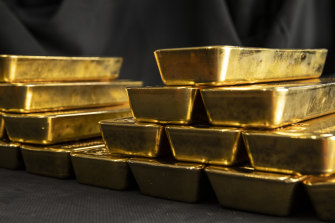
Newcrest Mining is the biggest gold miner on the ASX by market capitalisation and production volumes.Credit:Louie Douvis
However, RBC's Paul Kaner said the result was a neutral one on balance, as all-in sustaining costs were 17 per cent higher than expected, driven by higher treatment, refining and transportation costs at the Telfer operations in WA and lower by-product credits at Caida in NSW.
Newcrest's FY21 guidance was unchanged, with the company tracking slightly above the mid-point for production guidance, and slightly higher than the top cost guidance parameter.
Shares were last at $27.095.
Gold miners were a strong presence on the market today.
The yellow metal was flat overnight but has since edged higher to $US1785.39 per ounce.
In local dollars, the bullion is buying $2292.27.
Northern Star, Evolution, Regis Resources, Perseus Mining and Silver Lake Resources were all up by between 2.3 per cent and 3.8 per cent.
Comments
Post a Comment